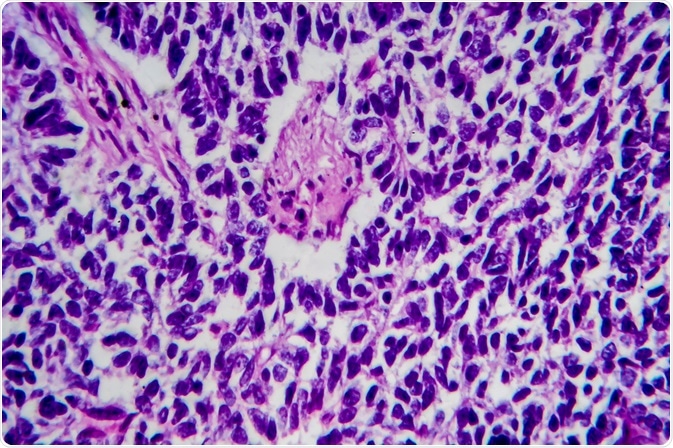The overall prognosis of Wilms Tumor is usually quite positive with more than 80% of all children diagnosed expecting to survive the disease long-term. With a timely diagnosis before the tumor has metastasized to other parts of the body the cure rate is even higher at 90% with standard treatment.
The specific prognosis for each individual affected by this disease depends on the stage of the disease and the treatment plan. It is important that the tumor is removed as early as possible and appropriate management is undertaken, to reduce the risk of spreading.
 Image Credit: Kateryna Kon / Shutterstock.com
Image Credit: Kateryna Kon / Shutterstock.com
Favorable histology and anaplasia
One of the most important categorizations that can help to estimate prognosis is the histology of the cancer cells, based on the microscopic appearance.
Cells with favorable histology account for the majority of Wilms tumor cases and involve cancer cells that display abnormal characteristics but do not have large defects in the genetic DNA. This type is associated with a positive prognosis, often more than 90% depending on the progression of the tumor.
Unfavorable histology is marked by cancer cells with wide variations in appearance with the nucleus of the cell usually appearing swollen and distorted. This effect is known as anaplasia and is more difficult to treat and hence associated with a poorer prognosis.
Chromosome involvement
Loss-of-heterozygosity (LOH) of chromosomes 1p and 16q in particular tumor cells are a specific class of Wilms tumor cases. Patients affected by this pathology of the disease are associated with a higher risk of relapse or death and, therefore, this factor can be used to help determine prognosis and choose appropriate treatment strengths.
Stages of disease progression
Cancerous tumors are classified according to five stages, each of which is associated with a different prognosis according to the disease progression.
- Stage 1 involves a localized tumor in the kidney, which can be surgically removed. This is often followed by a simple chemotherapy regimen and radiotherapy to reduce risk of relapse. 4-year survival ranges from 98% for favorable histology and 80% for anaplasia.
- Stage 2 tumors are localized to the kidney but have reached a more advanced stage. This also involves surgical nephrectomy and preventative chemotherapy and radiotherapy. 4-year survival rate from 98% for favorable histology to 82% for anaplasia.
- Stage 3 tumors are still localized to the kidney but have progressed to a more advanced stage. Treatment involves surgical nephrectomy, chemotherapy and radiotherapy, with 4-year survival rate from 53% to 94%, depending on degree of anaplasia.
- Stage 4 tumors have usually metastasized to other areas throughout the body. Treatment involves nephrectomy, chemotherapy and radiotherapy, with a 4-year survival rate from 44% to 86%, depending on the degree of anaplasia.
- Stage 5 tumors have metastasized to other areas throughout the body and reached an advanced stage. Treatment involves bilateral renal biopsy, nephrectomy, chemotherapy and radiotherapy. The 4-year survival rate ranges from 42% to 80%, depending on degree of anaplasia.
Wilms' tumor (nephroblastoma) - an Osmosis preview
Risk of second cancer
Even though the overall prognosis of Wilms tumor is quite promising, children that are affected by the disease are at an increased risk of second cancer later in life. This is thought to be as a result of exposure to treatment in the management of Wilms tumor, although the benefits of treatment continue to outweigh these risks.
Second tumors that people that have been affected by Wilms tumor are more susceptible to include bone and soft-tissue sarcomas, breast cancer, lymphoma, melanoma, leukemia and cancer of the breast or gastrointestinal tract.
References
Further Reading